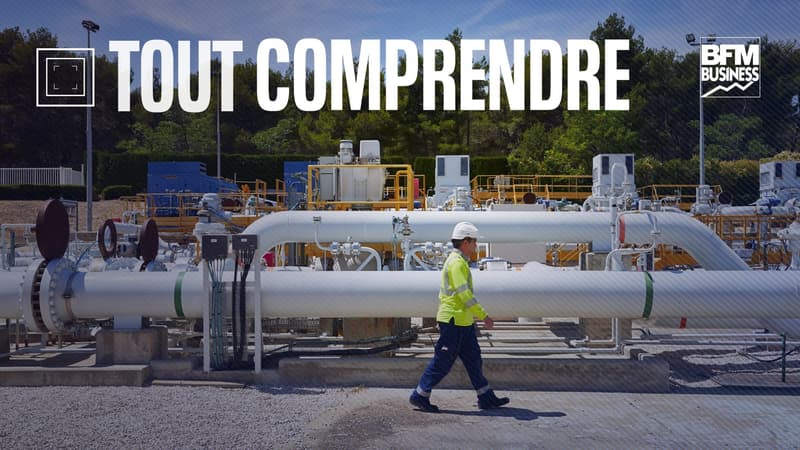They are at the center of the public authorities’ reaction to fuel shortages, along with the requisitions that began on Wednesday. The gates of the strategic stocks were opened this weekend by the Government, to supply the service stations and respond in part to the difficulties of supplying consumers.
According to the statistics of the International Energy Agency (IEA), which requires its members to have a minimum of 90 days of net oil imports in stock, France has 115 days of consumption in these deposits, to respond to situations of ‘ emergency’.
• When was your establishment?
The accumulation of stocks was gradual in France. Like this note energy review, it was in 1918 when a Commissariat of essences and fuels appeared, a public body in charge of managing the flows. On the same date, the oil unions constituted a single interlocutor for the government. In this structure, in the interwar period a decree is imposed on companies, obliged to “maintain at all times a reserve stock that represents at least “a quarter of the quantities declared for consumption during the previous twelve months” France monetizes access to their markets when the big ones accumulate stocks.
The Second World War marks the destruction of infrastructure, and the end of the conflict a continuous increase in consumption. As a result, stocks fell and it was not until the Suez Crisis in 1956 that they began to rise again. The Suez Canal is blocked by Nasser, and the exporting countries (Libya, Saudi Arabia) abruptly close the floodgates. France is hard hit and lives with just 15 days of reserves; in 1959, the notion of “strategic storage” was enshrined in the Defense Code.
Having long been reluctant to join a union of importing countries (fearing US hegemony in the field), France ended up joining the International Energy Agency in 1992. It aligned with the European Union on standards set by the minimum agency. 90 days of consumption stored in each member country.
• Where are they ?
There are 89 sites in the territory, of diverse origin. The details of the locations are not known, for strategic reasons. For example, 8 sites are present near refineries, while another 80 are located on commercial sites of oil companies.
The largest site, a third of the 18 million tons stored to date, is finally in Manosque, in the Alpes-de-Haute-Provence department. It has been in service since 1969 and is operated by Geosel, a company specialized in underground hydrocarbon storage. On the site, 30 wells are dug in saline cavities, located between 600 and 1000 meters deep. They house 6 million cubic meters of diesel, gasoline or crude oil. This site, the largest in Europe, is even directly connected to five pipelines and one refinery.
• Who is in charge?
France structured the governance of these key resources after joining the IEA in 1993. The Société anonyme de gestion de stocks de sécurité (SAGESS), responsible since 1988 for creating and maintaining stocks, was then strengthened. This private but non-profit institution has shareholders from TotalEnergies, ENI, BP, Bolloré Energy, Shell and Leclerc.
It allows companies, required by law to store, to have an institution that administratively and financially manages these reserves, buying, selling and maintaining the sites. This SAGESS delegates its actions to a Professional Committee for Strategic Petroleum Actions (CPSSP), which collects contributions from the depositary companies, for its economic operation. This committee brings together public and private members from various ministries.
The control of the location and amount of available resources is finally carried out by the General Directorate of Energy and Mineral Resources (DIREM), in turn attached to the General Directorate of Energy and Climate (DGEC), dependent on the Ministry of Ecological Transition. Act along with the customs.
• What can they be used for?
Public authorities can dispose of these reserves at will, in favor of a situation that is considered urgent. These shares, therefore, do not belong to them but remain in the hands of the government.
This therefore overlaps with situations that put the country’s energy supply at risk, a legacy of the 1956 crisis, but also with more political risks, such as the current sequence of massive strikes among workers in the energy sector. The most striking and most recent precedent dates back to 2016, when the left had already used this ploy to break up a mobilization: the unions were then protesting against Myriam El Khomri’s Labor Law.
Stocks can also be released by decision of the International Energy Agency, as at the beginning of the year. After a first contribution of 60 million barrels from its partners at the beginning of March, the institution had decided on a second volley of the same kind, within six months. These actions were intended to alleviate the tension put on the markets by the sanctions imposed on Russia, by the price increases and by the restrictive policies of OPEC+.
Source: BFM TV


